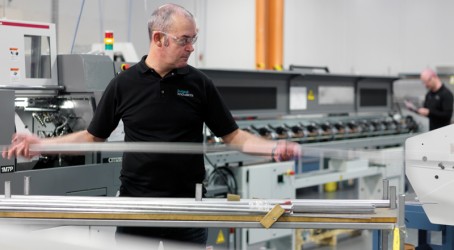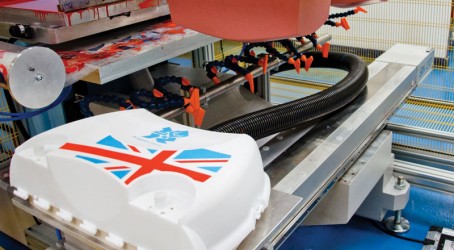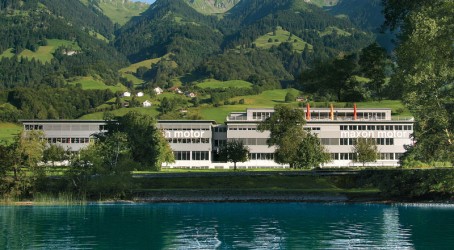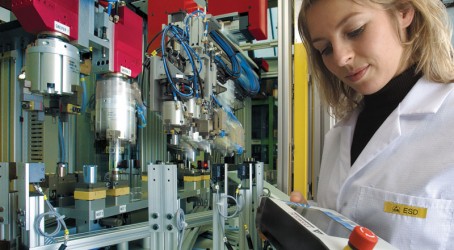The allure of making things in China seems to be fading. Spiralling labour costs, the expense of transporting cargo in an age of rising oil prices and continuous question marks over quality mean that many British companies are rethinking the idea that designing here and manufacturing in Asia still gives them the best deal.
The Brits are not alone in thinking in this way. A recent survey of more than 100 US companies revealed that 37% were planning or considering bringing manufacturing back to home shores.
The phenomenon is known as “reshoring” and Lee Hopley, chief economist at the manufacturers’ organisation the EEF, says that it is a trend that will evolve over the next couple of years.
The decision on whether to reshore is not based on a simple equation, she says. “We have to look at some of the reasons companies decided to go there over the past 10 or 15 years. Some of it was about reducing costs, with significant cost advantages in lower labour cost economies like China. And some of them spotted market opportunity – there are advantages to having a presence on the ground.
“One of those reasons may still be valid, but for others there are question marks about that cost advantage. That was being eroded before the financial crisis, as we saw significant increases in energy and freight costs.”
These developments mean that, even with lower labour costs, by the time companies have factored in investments and the cost of moving things around, the final tally for producing in some of these markets is not as cheap as first thought.
On top of the cost question are the issues of quality that plague Chinese-made goods. If quality is not up to scratch or lead times are unpredictable, the benefits to a business of manufacturing in these countries becomes harder to fathom.
Hopley says that the recession has pushed companies to rethink their manufacturing strategy. “It was a shock to the system,” she says. Companies may have lost sight of how they were doing if their manufacturing was thousands of miles away. Losing just one strategic supplier from the manufacturing chain can have significant consequences for businesses.” She adds that several natural disasters have knocked out some strategic suppliers and left companies unable to see what is happening in particular supply chains.
All these developments have led companies to question whether it makes better sense to use local suppliers more.
Whether there is still a clear advantage to having a part of the business thousands of miles away will depend on the company. But it could make particular sense to reshore manufacturing activities that are not labour-intensive and that involve high-value capital. Hopley says: “Market opportunities are shifting. It is a dynamic environment. It’s not one-way traffic – it’s not that it all went to China and that now it’s coming back.”
But some UK companies have already taken the plunge and brought manufacturing back.
One of these is Magmatic, a design company that makes travel products for children. The company’s flagship product is the Trunki, a ride-on suitcase. The item’s manufacture is outsourced and, until recently, was carried out in China and the US. Now, however, the Trunki is made in Plymouth.


Magmatic’s managing director Rob Law says: “We’ve been trading for just over six years. Back when I started the business, it just wasn’t economically viable to make it in the UK. It’s something that I have always wanted to do.”
Things changed just over a year ago, he says, when sterling was devalued against the US dollar. As the company bought the product in dollars from China, this devaluation prompted a rethink of the sums. Magmatic has seen constant rises in the cost of production in China, too.
“In the six years that we have been going, the cost of labour has trebled. Inflation costs are on the up and the Chinese currency is appreciating against the US dollar. Lots of the trend graphs are pointing to constant price rises,” says Law.
Several strong business factors favour the reshoring of Trunki manufacturing, he adds. The lead time from placing an order to receiving the product at the warehouse has fallen from 120 to 30 days. This means the business does not have to buy as much stock, which frees up cash flow and allows reaction to market demands. The risk posed by fluctuating exchange rates and import duty taxes is also reduced, he says.
But bringing manufacturing to the UK has not come cheap. The British-made tooling for the factory was six times more expensive than it would have been in China. But in return the company has a more efficient set-up that can work faster than those in China.
The design of the Trunki also had to change. The Chinese-made product had 25 metal parts that workers screwed into place. With these parts, it was not cost-effective to make the product in the UK, so a senior designer spent six months re-engineering the product to do away with the metal.
“It is still more expensive to make the Trunki in the UK, but the gap isn’t that big when you weigh up all the other business benefits – it actually stacks up in the UK’s favour,” says Law.
Reshoring manufacturing may not always be the more costly option. For Surgical Innovations, a company that makes medical devices for use in keyhole surgery, it is cheaper to manufacture products in the UK than abroad.
Previously the company developed the instruments but licensed the sales and production to others. The products were made in the Far East, Eastern Europe, Scandinavia, Germany, and Morocco. But in 2008, as part of an overhaul of its business strategy, Surgical Innovations brought manufacturing home to the UK.
The company’s chief executive, Graham Bowland, says making products abroad involved hidden costs. These included the margins taken by the companies manufacturing the products, and the premiums paid for low-volume production runs. There were also the costs of transport, quality and regulatory controls, and the auditing that is required in medical device manufacture.
“We make medical devices that go into people’s bodies during surgery, and the most important thing is quality,” says Bowland. “It is important for me that I can walk out onto the factory floor every day and see the things being made – it’s that ability to maintain those quality standards.”
Under the new business strategy, 25% of revenue is now spent on research and development. This R&D input, coupled with the in-house manufacturing, means products can come to market a year from concept. “To compete against billion-dollar companies in the US, you have to have speed to market,” says Bowland.
To get the facility up to scratch has taken £7 million of investment on machinery since 2008. The company is listed on the Alternative Investment Market, so it was able
to raise £4 million from the City to fund the move. Over the past three years, staff numbers have quadrupled to 120.
But the company’s growth is not forecast to end there. A further £6-7 million from the Regional Development Fund is in the pipeline for the opening of a new 120,000ft2facility. It will be an anchor for the Leeds health hub, a planned centre for healthcare that, it is hoped, will attract more investment and promote synergies between local industries.
“We will be the catalyst for that,” says Bowland.

High labour costs at home fail to deter Swiss company
If British manufacturers struggle to compete with low labour-cost countries such as China, spare a thought for drives and systems maker Maxon Motor, whose main factory is in the picturesque village of Sachseln, not far from Zurich in Switzerland. Maxon has resisted the temptation to shift production to the Far East, insisting that high-tech manufacturing can still thrive in wealthy parts of developed countries.
The company’s chief executive Eugen Elmiger says: “This is actually a very good environment to design and engineer high-precision products such as brushless and brushed DC motors. We enjoy low taxes, our government is very supportive and we have extremely loyal employees. People stay here because we value our staff and subsequently they love the business. It’s a great place to work.”
Maxon admits that its products are not the cheapest available. It doesn’t look to compete on price with Chinese rivals, preferring instead to sell itself on the technical capabilities of its drives and systems. Elmiger says that, by making the bulk of its products at the Sachseln site, Maxon has greater control over quality than it would it if went overseas.
One of the biggest problems the company’s idyllic location presents is access to young engineers. “Sachseln is not in the centre of the high-technology industry, whereas Zurich is home to some big companies such as ABB and Siemens,” says Elmiger. “That means we have to work hard to attract young engineers and get them to settle here with their families. Our plant has a kindergarten on-site to make things easier for those with young families, and the working environment is very pleasant.”
Maxon’s respectful attitude towards its staff has proved beneficial to the business. The company has a low staff turnover that provides for long-term business continuity. Maxon has enjoyed rapid growth in sales and profits recently, supplying its motors primarily to the medical, industrial automation and robotics sectors. It is increasingly targeting the aerospace industry where certification requirements exclude cheaper rivals. “Aerospace is still small but it will grow. I think we can triple the size of our business here, possibly in a short period.”
Maxon says it also has high hopes of cultivating a niche but lucrative market providing lightweight motors for small vehicles such as electric bikes.
